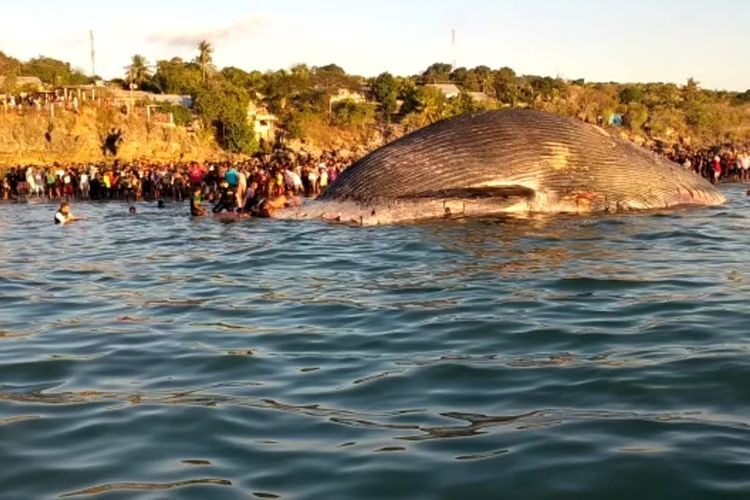
The blue whale is the largest animal on Earth. The discovery of the 29-meter-long carcass immediately went viral and became a spectacle for thousands of residents of Kupang city and its surrounding areas.
"[We] responded quickly to reports from residents regarding the marine mammal stranded at the beach," Kupang Water Conservation Area Agency (BKKPN) head Ikram Sangadji said on Tuesday.
Ikram said the dead whale was first spotted by fishermen at around 10 a.m. in Kupang waters, before it was moved by the tide and left stranded at the beach at 3 p.m.
The Kupang waters are part of the Sawu Sea National Marine Park, which covers 10 regencies in NTT and has been a crossover area for cetaceans.
This was not the first time that a cetacean has been stranded at the shores. In January, a dead sperm whale was found in an area of mangrove trees on Tasilo Beach, Rote Ndao regency.
"The monitoring conducted by the BKKPN shows that 16 species of cetaceans have appeared, consisting of eight types of dolphins and eight types of whales," Ikram said.
Ikram said the dead blue whale would be buried at the sandy beach for environmental reasons and because the skeleton could be dug up later for preservation.
He said the burial would be carried out near the Kupang Oceanic and Fisheries Resources Surveillance Directorate General in Nunhila.
"The blue whale is a protected animal. Therefore, [...] preservation of its specimens will provide accurate evidence of the existence of the organism in a location," he said.
In addition, said Ikram, the preservation would serve as an educational tool and allow further research on various topics, such as the animal's kinship, behavior, anatomy, habitat and morphological variations.
People gather to see the carcass of a blue whale at Na Batu Beach in Nunhila subdistrict, Kupang, East Nusa Tenggara, on Tuesday afternoon. (Courtesy of Kupang National Marine Conservation Agency) #jakpost pic.twitter.com/e56PKTE1bD
— The Jakarta Post (@jakpost) July 22, 2020



Reader Comments
to our Newsletter